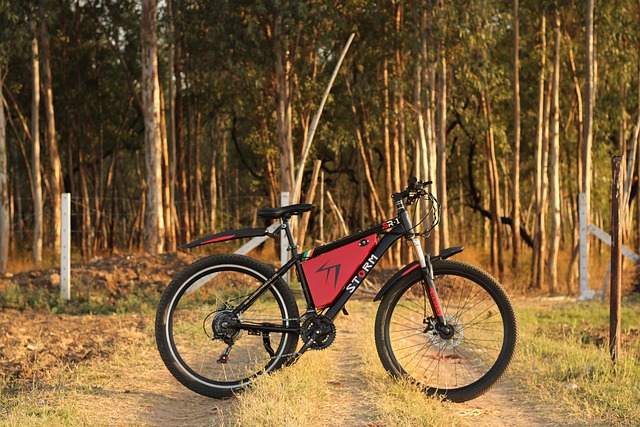As electric bikes (ebikes) gain popularity as an eco-friendly and efficient mode of transportation, it’s essential for both riders and law enforcement in California to understand the regulations surrounding these vehicles.
This guide aims to provide comprehensive information about electric bike laws in California, ensuring that riders are aware of their rights and responsibilities while promoting safe practices on the roads
Classifications of Ebikes
California law categorizes ebikes into three classes:
- Class 1 Ebikes: These bikes provide pedal assistance up to 20 mph and do not have a throttle.
- Class 2 Ebikes: These bikes have a throttle that can propel the bike without pedaling, also up to 20 mph.
- Class 3 Ebikes: Similar to Class 1, but pedal assistance can reach up to 28 mph.
California State Laws on Ebikes
Understanding the laws governing ebikes in California is crucial for both riders and law enforcement.
Definition of Ebikes under California Law
Under California Vehicle Code (CVC) 406(a), ebikes are classified as “electric bicycles” and considered as bicycles rather than motor vehicles, given that they meet certain criteria.
Class 1, 2, and 3 Ebikes: Differences and Requirements
The different classes of ebikes have specific requirements, such as maximum motor power and speed limits, which riders must adhere to.
Maximum Speed and Motor Power Limits
California law stipulates that ebikes must not exceed 28 mph while operating in pedal-assist mode. Moreover, the motor’s power rating should not exceed 750 watts.
Age and Licensing Requirements
Riders must be at least 16 years old to operate a Class 3 ebike. No driver’s license is required for riding any class of ebike.
Rules and Regulations for Ebike Riders
Riders must be aware of the regulations governing the use of ebikes to ensure their safety and the safety of others.
Where Can Ebikes Be Ridden?
Ebikes are generally allowed on public roads, bike lanes, and paths. However, certain areas, like highways, might have restrictions.
Sidewalk and Bike Lane Etiquette
When using bike lanes and sidewalks, riders should follow specific guidelines to avoid conflicts with pedestrians and other cyclists.
Helmet and Safety Gear Regulations
While helmets are mandatory for riders under 18, it’s advisable for all ebike riders to wear protective gear for their safety.
Riding Under the Influence
Operating an ebike while under the influence of drugs or alcohol is illegal and may result in penalties.
Safety Measures for Ebike Riders
To ensure a safe riding experience, riders should adhere to essential safety measures.
Basic Maintenance Tips
Regularly maintaining and inspecting the ebike, including the brakes and tires, is crucial for safety.
Visibility and Lighting Requirements
Installing proper lighting and reflective gear makes riders more visible, especially during low-light conditions.
Interacting with Pedestrians and Motorists
Understanding how to interact with pedestrians and motorists fosters a safe and cooperative environment on the roads.
Avoiding Common Accidents
Being aware of common accidents involving ebikes can help riders take precautionary measures to avoid them.
Interactions Between Ebike Riders and Law Enforcement
Law enforcement officers need to be able to identify ebikes and understand the regulations when interacting with riders.
How Law Enforcement Identifies Ebikes
Tips for law enforcement on distinguishing ebikes from other motor vehicles.
Dealing with Traffic Stops and Checkpoints
Guidance for both law enforcement and riders on handling traffic stops and checkpoints.
Rights and Responsibilities of Riders
Riders have specific rights and responsibilities that they should be aware of during interactions with law enforcement.
Penalties for Violations
An overview of the potential penalties for violating ebike laws in California.
Promoting Ebike Safety and Awareness
Efforts to promote ebike safety and awareness can help improve the overall riding experience and reduce accidents.
Educational Programs and Initiatives
Creating educational programs to spread awareness about ebike laws and safety measures.
Encouraging Helmet Use
Initiatives aimed at promoting helmet usage among ebike riders.
Sharing the Road with Ebikes
Encouraging motorists to be mindful and respectful of ebike riders on the road.
Collaborating with Local Communities
Involving local communities in promoting safe ebike practices.
Environmental Benefits of Ebikes
Ebikes play a significant role in reducing environmental impact and promoting sustainability.
Reducing Carbon Footprint
The environmental benefits of using ebikes instead of traditional motor vehicles.
Congestion and Pollution Reduction
How ebikes can help reduce traffic congestion and air pollution.
Conclusion
Understanding the laws and regulations related to ebikes is essential for both riders and law enforcement to ensure safe and responsible riding practices. By promoting awareness, implementing educational programs, and fostering a cooperative environment on the roads, California can further embrace the benefits of ebikes and create a safer and sustainable future for transportation.

0 Comments